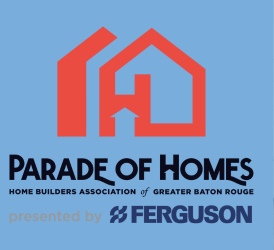
Brick walls crumble and deteriorate due to many factors, both natural and man-made. Specifically, we are talking about solid brick walls, not brick veneer on an exterior wall. Solid brick walls are often built as the end walls on large houses and may be referred to as multi-wythe walls. Brick walls add an interesting architectural feature to large houses and may serve as structural walls to support parts of the house.
Brick walls perform many purposes in houses and are known for their insulation capabilities, water and air barrier qualities, and, of course, their structural capability. Brick walls are typically constructed in a parapet wall fashion, meaning the top of the brick wall extends above the adjacent roof.
This type of construction requires careful flashing of the roof into the brick wall. There are many factors that can cause bricks to crumble, but here are the most common causes.
Eight Common Causes for Brick Walls to Crumble
1. Moisture
Water is one of the primary reasons for the deterioration of brick walls. Moisture can seep into the bricks and mortar, causing the material to weaken and degrade over time.
Freeze-thaw cycles can also lead to cracking and crumbling as water trapped in the bricks expands when it freezes.
2. Mold and Mildew
Moisture accumulation can create a conducive environment for mold and mildew growth, which can erode the mortar between the bricks and weaken the structure.
3. Poor Construction
If the bricks were not properly laid or if low-quality materials were used, the wall is more likely to deteriorate. Inadequate mortar, incorrect brick placement, and lack of proper foundations can lead to structural issues.
4. Chemical Reactions
Exposure to certain chemicals in the environment, such as acids from pollution or nearby industrial activities, can cause bricks to erode over time.
5. Abrasion
Continuous exposure to abrasive elements like wind-driven sand, harsh rain, or even human activities can wear down the surface of bricks, making them more susceptible to damage.
6. Biological Growth
Plants and roots can grow into mortar joints, causing them to crack and making it easier for moisture to penetrate, leading to further deterioration.
7. Lack of Maintenance
Regular maintenance, including repointing (replacing deteriorating mortar), cleaning, and sealing, is crucial to preserving the integrity of a brick wall. Without proper care, the wall is more likely to deteriorate faster. Refer to our article, The Value of Tuckpointing, to learn more.
8. Natural Disasters
Earthquakes, floods, and other natural disasters can cause severe damage to brick walls, leading to crumbling and deterioration.
By far, moisture is the leading cause of brick walls to crumble. How does this happen? Here is one explanation. Water vapor travels through the brick wall from the outside of the house to the inside of the house. In doing so, the water dissolves or destroys the features of the brick or mortar, causing damage to the wall. The damage can show up as efflorescence or broken brick and mortar. Sometimes, the brick or mortar turns to a dust-like texture because of the wet-dry cycles the wall experiences.
To prevent or minimize the deterioration of a brick wall, it is important to ensure proper techniques are used during construction, use high-quality and appropriate materials, provide adequate drainage and drying of the exterior wall, and perform yearly maintenance on the wall to address any issues promptly. You should consult with a qualified, licensed building contractor to identify the cause of the problem and discuss repair options.
HOUSETIPS‘ goal is to help homeowners understand their home’s various systems and provide insight into common and unusual problems that may arise. If you have any questions, please contact us today!



